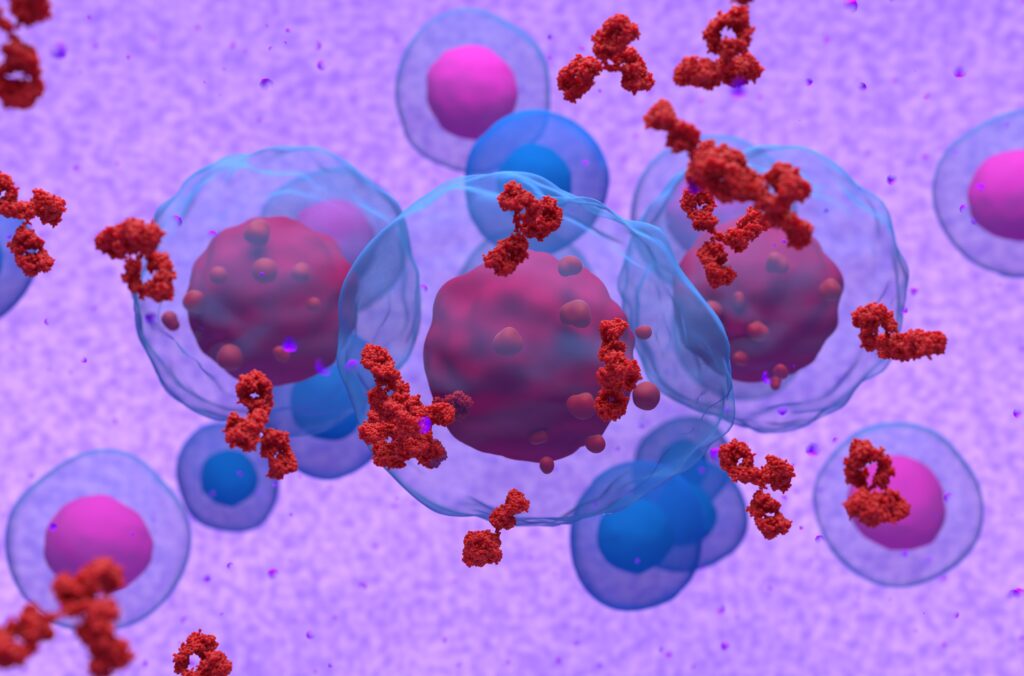
Cancer of the lymphatic system is known as Lymphoma. A cancer diagnosis can be overwhelming and anxiety-provoking. There are two types of Lymphoma: non-Hodgkin Lymphoma and Hodgkin Lymphoma.
The prognosis of Lymphoma is different for each individual. There are available treatment options. If you notice symptoms and signs of Lymphoma, it’s essential to see a healthcare professional as soon as possible to obtain treatment.
What Is Lymphoma, and What Types of Lymphoma Are There?
Lymphoma is a cancer of the lymphatic system and is considered a type of blood cancer. Your lymphatic system includes vessels, organs, and tissues that help your body fight infection and balance bodily fluids. The blood cancer classification occurs from Lymphoma in the white blood cells.
Two types of Lymphoma exist. They are Hodgkin Lymphoma and non-Hodgkin Lymphoma. According to PubMed, Hodgkin’s Lymphoma usually affects cervical lymph nodes, occurs in young adults, affects Reed-Sternberg lymphocytes, and has scattered mononuclear Hodgkin cells.
In non-Hodgkin’s Lymphoma, there is no presence of Reed-Sternberg lymphocytes. Physicians can identify Reed-Sternberg cells through a microscope to diagnose the correct type of Lymphoma.
What Are the Symptoms of Lymphoma?
Knowing the symptoms of Lymphoma can help you obtain treatment faster. The Cleveland Clinic reports that these symptoms are characteristic of both Hodgkin and non-Hodgkin Lymphoma:
- Persistent fatigue
- Fever above 103 degrees Fahrenheit for more than two days
- Swollen lymph nodes in your armpits, neck, or groin that are present after a few weeks
- Shortness of breath
- Night sweats
- Unexplained weight loss
While many of these symptoms can be characteristic of other conditions, you should consult a medical professional to check for Lymphoma if you have all or most of these symptoms.
What Causes Lymphoma?
There are various causes of Lymphoma. According to the Cleveland Clinic, many cases of Lymphoma occur when the white blood cells in your lymphatic system mutate into cancer cells that won’t die.
Many of the mutations occur spontaneously, but the following can make you more at risk for developing Lymphoma:
- A diagnosis of HIV
- A diagnosis of Epstein-Barr Virus
- Having had Kaposi Sarcoma Human Immunodeficiency Virus
- A family history of Lymphoma
- A weakened immune system due to medical treatments or other conditions
- A diagnosis of an autoimmune disease
How Is Lymphoma Diagnosed?
A biopsy usually confirms a diagnosis of Lymphoma. According to PubMed, removing an entire cancerous lymph node is considered the gold standard for diagnosing Lymphoma as it allows a view of the whole structure of the lymph node.
What Treatments Are Available for Lymphoma?
Various treatment options are available for Hodgkin and non-Hodgkin’s Lymphoma. The varying treatments available, according to the Lymphoma Research Foundation, include:
- Chemotherapy: A treatment that uses medication to prevent the growth of tumors and destroy cancer cells.
- Radiation: Uses high-power X-rays to kill cancer cells.
- Immunotherapy: A treatment that helps train your immune system to fight cancer.
- CAR-T Cell Therapy: A treatment that turns T-cells into cancer-fighting cells.
- Stem Cell (Bone Marrow) Transplantation: A treatment and procedure that replaces cancerous stem cells with healthy ones.
If you have Lymphoma, consider talking with a healthcare professional about what treatments or combination of treatments may be most effective.
Prognosis and Side Effects of Lymphoma Treatment
If you have received a Lymphoma diagnosis, you may wonder about your prognosis and how many people get better with treatment. If you have non-Hodgkin Lymphoma, the American Cancer Society estimates that the 5-year survival rate is 74% for those diagnosed with the condition.
The American Cancer Society notes that the prognosis is different based on the type and stage of the condition. For Hodgkin’s Lymphoma, the survival rates are dependent on the location. For example, the American Cancer Society reports that localized Hodgkin Lymphoma, in which cancer affects one area, has a 93% 5-year survival rate.
Regional Hodgkin’s Lymphoma has a 95% 5-year survival rate when the cancer reaches one lymph node and nearby organ. The 5-year survival rate for distant Hodgkin’s Lymphoma, where cancer has spread to distant body parts, is 83%.
There are also many side effects of Lymphoma treatment to be aware of. According to Lymphoma Action, side effects of treatment can include:
- Bowel problems
- Dry, itchy, and sore skin
- Hair loss
- Nausea
- Vomiting
- Nerve damage
- Sleep problems
- Anemia (low red blood cells)
- Neutropenia (low white blood cells)
- Thrombocytopenia (Low platelets)
- Reduced fertility
- Early menopause
- “Chemo brain” that affects attention and concentration
- Fatigue
- Sore Mouth
Overview
Lymphoma is a blood cancer that can affect your body in many ways. There are two types of Lymphoma: Hodgkin and non-Hodgkin’s Lymphoma. If you have symptoms of Lymphoma, you should consult with a medical professional to confirm the diagnosis and learn about treatment options for you.
For more education and support, you can visit the Lymphoma Research Foundation. You don’t have to go through a Lymphoma diagnosis alone.
Resource Links
- “Hodgkin Lymphoma” via PubMed
- “Lymphoma” via Cleveland Clinic
- “Lymphoma” via PubMed
- “Treatment Options for Lymphoma” via Lymphoma Research Foundation
- “Chemotherapy” via Cleveland Clinic
- “Radiation Therapy” via Cleveland Clinic
- “Stem Cell Transplant (Bone Marrow Transplant)” via Cleveland Clinic
- “CAR T-Cell Therapy” via Cleveland Clinic
- “Survival Rate and Factors that Affect Prognosis (Outlook) for Non-Hodgkin Lymphoma” via American Cancer Society
- “Side Effects of Lymphoma Treatment” via Lymphoma Action





